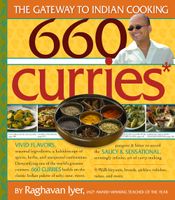Advertisement
Clove
Lavang
Published 2008
The mention of pungent cloves in a sauce described by Valmiki in the Hindu epic Ramayana (2nd century B.C.) gives a clue to their early presence in India. This evergreen tree bears nail-shaped flower buds; when dried, these buds yield the highly aromatic black cloves. The spice’s oils (eugenol) are the source of aroma and heat in Indian curries, especially in the northern regions. The oil also has a certain numbing quality, contributing to that sense of hot pungency on your tongue. As a spice, clove bouquets our curries with its aroma and flavor when sizzled in hot oil. When gently pounded and steeped in coconut milk (see Stewed Potatoes, Carrots, and Peas in Spiced Coconut Milk), its presence is hushed. It is a warming spice when toasted with other spices and ground to make Punjabi garam masala. Clove’s strength is evident in Bangala garam masala, where it is one of only three spices in this blend from the east coast. Both of these blends assert their presence in numerous curries from those regions.


